Want to listen to more stuff like this? Check out my podcast!
- The first step to making the most of the quarantine is creating a daily schedule to manage your time effectively.
- Once that’s in place, use your time to exercise every day, eat well, get work done, read great books and articles, watch great movies, and listen to great podcasts.
- Keep reading to learn exactly how to plan your days and what to do to stay fit, productive, and sane until life returns to normal!
FRANDO!
It’s-a-me, your Pandemic Pal, Corona Chum, and Quarantine . . . uhhhh . . . Quixote?
And here we are, socially stranded, steadily sanitized, and slightly stir crazy thanks to The Rona, which isn’t merely “another flu,” as many not-doctors on (delete your) Instagram would have you believe.
But hey, there are some white clouds in the sky, too.
For instance . . .
- Thanks to the cancellation of sports, many men have discovered they live with women and children who seem pretty nice.
- We’ve discovered how someone eating bat soup in China can cause a worldwide shortage in toilet paper.
- This may lead to an orgiastic baby boom, and in the 2030s, we’ll witness the rise of THE QUARANTEENS.
Ha ha ha, and that’s not all sweet cheeks—open your mouth, so I can ladle some more rich, creamy good news into it.
According to a March 19th message from Harvard Health Publishing . . .
- Most people with COVID-19 recover. Estimates now suggest that 99% of people infected with the virus that causes COVID-19 will recover. Some people have no symptoms at all. And while thousands of people have died, the overall death rate is about 1% (or perhaps even lower), far less than MERS (about 34%), SARS (about 11%), or Ebola (90%), though higher than the average seasonal flu (0.1%).
- Children seem to be infected less often and have milder disease. According to the CDC, the vast majority of infections so far have afflicted adults. And when kids are infected, they tend to have milder disease.
- The number of new cases is falling where the outbreak began. During his speech declaring the new coronavirus outbreak a pandemic, the director-general of the WHO pointed out that “China and the Republic of Korea have significantly declining epidemics.” In fact, Wuhan province (site of the very first cases) has just reported no new local cases for the first time since the outbreak began.
- Many businesses have stepped up to help us through the crisis. The sports world is raising money for stadium employees, Uber Eats is divvying out free delivery to help independent restaurants, professional soccer players are entertaining viewers with a FIFA tournament, and restaurants are doling out free food to those in need, to name just a few out of dozens.
What’s more, if we all comply with the requested precautions, we may get to enjoy a tide of positive developments and see a marked shift toward normalcy by the end of next month.
So, let’s just mind our own business for a couple of weeks, and then we’ll be able to say we survived the Great Toilet Paper Crisis of 2020 and not . . . something else.
That said, if you’re new to working (and working out) from home, the quarantined life is a long row to hoe.
How are you supposed to organize your day? What should you do with your newfound free time? How do you keep from skipping workouts, eating too much, frittering away all your time on social media and entertainment, and shirking your work?
That’s what this article will be all about.
Before we get to all of that, however, let’s begin with a bit of perspective.
Never Say Die
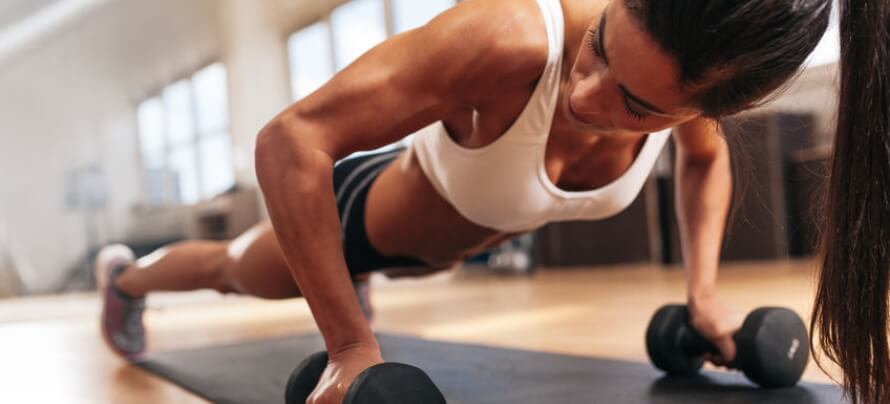
We all agree this global pandemic sucks moist, open sphincter.
People are dying. Economies are crashing. And many of us are wondering if the Doomsday Clock is about to strike midnight.
Then again, if you’re reading this, you’re probably not dying, your economy is still functional enough to provide high-speed internet, and scientists have been predicting the imminent end of days since Malthus.
So count yourself lucky, and especially if you and your friends and family are healthy, still have jobs, and are about to receive a sack of TrumpBux™.
(And even if you’re not getting sweet any stimulus scrilla, if you have a job, your employer is almost certainly getting his payroll, rent, and utilities covered for a couple of months, allowing you to keep said job.)
In fact, I want you to say something with me, out loud:
I’m thankful for my health, job, and TrumpBux™.
Come on. Don’t be an ingrate. SAY IT.
HEALTH 👏JOB 👏TRUMPBUX™ 👏
It feels good, right?
What’s more, you can view this current predicament as an opportunity to focus on and optimize things you can control, starting with your schedule.
If you’re working from home, for instance, there are no office shenanigans and distractions to sap your productivity, co-workers to bat the breeze with, or unnecessary meetings to zone out in. In other words, here’s your chance to see just how productive you can really be.
You also now have extra time for self-care necessities like getting 7 to 9 hours of sleep per night, working out every day, and preparing healthy homemade meals.
Then there’s other wholesome stuff we now have a good excuse to engage in more of, like spending more time with our families, friends, and neighbors, reading good books, and learning new skills.
And yes, we can even afford to sneak in some good television and movies, too.
Who knows, when this viral boogaloo is finally over, and the Group of Seven has kicked the Chinese government into the sewer grates to become sewer clown food, some (or many!) of these new, healthy habits of yours will stick.
Imagine, just a couple months from now, you’re healthier, happier, and fitter than before the beer virus world tour began. And who knows, maybe than ever before?
Are you game?
*eyebrow waggle*
Then keep reading, my lovely little droog.
Create a Daily Schedule (and Stick to It!)
Without the familiar structure of their normal workdays and weekends, many people feel lost and listless right now, like zoo animals that have suddenly been released into the wild.
The cure is routine.
As Mason Currey details in his book, Daily Rituals, the “secret” of many prolific artists, inventors, and innovators, many of whom had free reign over how they spent their time, was a precise personal schedule.
Some, like the writer Ernest Hemingway, the composer Gustav Mahler, and the architect Frank Lloyd Wright, did their best work first thing in the morning. Others, like the writer Samuel Johnson, the musician Bob Dylan, and the artist Pablo Picasso all worked best at night. Still others preferred to break up work into chunks throughout the day.
The important thing is that you find a routine that works for you and then stick to it like stink on a teenager.
Here are some tips that work well for me:
Time blocking
This means dedicating “blocks” of time each day to certain types of tasks.
For instance, I prefer to spend the first few hours of each day writing (books and articles), because I find it easiest and most productive when energy levels and motivation are high. I also schedule all podcast interviews, calls, and meetings in the afternoons, and dedicate my final time block of the day to more menial work like email and administrative tasks.
I recommend you use the same system for scheduling your workouts, meals, social and leisure time, and everything else. To organize everything, you can use a digital or paper calendar (I use Google Calendar).
Task prioritization
Time blocking specifies what type of work to do when, but not exactly what to do. That’s why I start each day by writing down what I’m going to do in each time block, and the order I’m going to do them in.
And those tasks are organized according to priority–the most urgent stuff gets done first.
For example, currently, my “writing” time block looks like this:
- A new book for the 40+ crowd that Simon & Schuster will publish next summer. I’m on a tight deadline and need to ensure I make enough progress every day, so this comes first.
- A new second edition of Beyond Bigger Leaner Stronger that I plan on self-publishing this summer. I’m itching to wrap and release this book, so it too gets some time nearly every day.
- Articles for the blog. Although not as important as releasing new books, many people enjoy my blog articles, which can also be repurposed into podcasts, so I’m always working on at least one.
And in practice, this means I work on the 40+ book until I’ve put enough words to (digital) paper to stay on track, followed by the second edition of Beyond Bigger Leaner Stronger until I’ve made enough progress there as well, followed by a blog article until I run out of writing time for the day.
You can learn more about the thinking behind this concept and exactly how to implement it in articles by the author, professor, and computer scientist Cal Newport:
- Deep Habits: The Importance of Planning Every Minute of Your Work Day
- Deep Habits: Three Recent Daily Plans.
Internet mindfulness
If you’re not careful with how you use the internet, you’ll wind up spending way too much time in what writer Tim Urban refers to as the “Dark Playground” . . .
“The Dark Playground is a place every procrastinator knows well. It’s a place where leisure activities happen at times when leisure activities are not supposed to be happening. The fun you have in the Dark Playground isn’t actually fun because it’s completely unearned and the air is filled with guilt, anxiety, self-hatred, and dread. Sometimes the Rational Decision-Maker puts his foot down and refuses to let you waste time doing normal leisure things, and since the Instant Gratification Monkey sure as hell isn’t gonna let you work, you find yourself in a bizarre purgatory of weird activities where everyone loses.”
In other words, with the internet, it’s very easy to bargain away your time instead of doing something productive or meaningful, and the more you do this, the more sorry, stressed, and stupefied you feel.
This includes the obvious like daisy-chaining YouTube videos, indulging in protracted bouts of “retail therapy,” and mindless Instagram scrolling.
It also includes busy-work, though—stuff that may feel productive but is really just a distraction from what you should be doing (high-priority tasks), like Slack conversations, non-urgent emails, and analytics browsing.
The solution?
“Schedule in advance when you’ll use the Internet, and then avoid it altogether outside these times,” writes Newport in his book, Deep Work. “I suggest that you keep a notepad near your computer at work. On this pad, record the next time you’re allowed to use the Internet. Until you arrive at that time, absolutely no network connectivity is allowed—no matter how tempting.”
And what if you need the internet to work on an important project?
The easiest way to win is using software like Cold Turkey to restrict your access to the tempting websites that aren’t “mission critical.”
All right, if routine is good, what should yours look like, exactly? Keep reading!
Summary: Without the familiar structure of your normal workdays and weekends, creating a new routine to manage your time effectively is essential. Time blocking, task prioritization, and internet mindfulness are three powerful tools for doing this.
Exercise Every Day
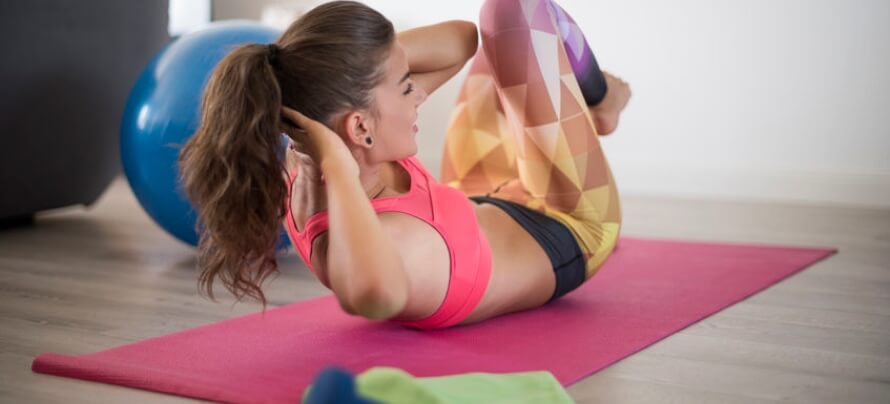
To quote All-American athlete, writer, and coach Dan John, “If something is important, do it every day; if it’s not important, don’t do it at all.”
Exercise is important and definitely should be done every day, even when we can’t follow our normal training programs.
First, realize that home workouts can be far more effective for maintaining (or even gaining!) muscle and strength than many people realize.
In fact, if you do it right, you shouldn’t lose any muscle to speak of and minimal strength no matter how experienced you are in the gym.
You may also be surprised at how many fewer calories you’re burning while stuck inside all day. Effective home workouts can help mitigate this, making it easier to maintain your normal diet without gaining fat.
To learn how to make the most of your home workouts, check out this article:
⇒ The Best Home Workout Routines for When You Can’t Go to the Gym
In it, you’ll find beginner, intermediate, and advanced bodyweight, band, and dumbbell/kettlebell workouts, along with equipment recommendations and programming tips.
And if you’re interested in building a full-on home gym, this article is for you:
⇒ The Complete Guide to the Best Home Gym Equipment in 2020
Now, even if you do lose a little muscle while quarantined, I have good news: It’ll come back very quickly once you get back into the gym. Think weeks, not months. This is the power of “muscle memory,” which is a very real physiological phenomenon.
Another reason to keep working out while at home is maintaining the habit of regular exercise is just as important as maintaining your physique.
This is particularly true if you’re new to working out and training still hasn’t become a permanent fixture of your lifestyle yet.
Exactly how long it takes you to form a new habit depends on your personality, how motivated you are, how difficult the task is, and other factors, but the more consistently you do something, the more likely you are to keep doing it.
And as a corollary, the less consistent you are with a new habit, the less likely you are to stick to it long-term.
To learn more about the science of building positive habits, check out this article:
⇒ A Scientific Guide to Habits: How to Build Good Ones and Break Bad Ones
So, staying fit and strong aren’t the only reasons to do home workouts; they also will keep you in the habit of working out, making it easier (physically and mentally) to resume your normal workout routine when your gym reopens.
Let’s not forget the mental and physical health benefits of regular exercise, either, which we can all use an extra helping of right now.
It doesn’t take much to get the job done, either—research shows that even a 10-minute walk workout can brighten your mood and boost your energy levels, and most of us have the time to do quite a bit more than that right now.
Additionally, if you aren’t in the habit of doing cardio, now is a perfect opportunity to start.
Not only will it help you burn some calories and improve your cardiovascular health, it’ll also give you an excuse to get outside, which can also benefit your health.
Check out these articles for some effective and fun cardio workouts:
⇒ The Top 3 Reasons to Do High-Intensity Interval Training (HIIT)
⇒ The Easiest Cardio Workout You Can Do (That Actually Works)
Finally, the coronavirus disruption and downtime is a worthy occasion for reviewing your normal workout programming and seeing how you can improve it for when we can hit the gym again.
These articles will help:
⇒ The Definitive Guide on How to Build a Workout Routine
⇒ The 12 Best Science-Based Strength Training Programs for Gaining Muscle and Strength
⇒ This Is The Last Upper Body Workout You’ll Ever Need
⇒ This Is the Last Lower Body Workout You’ll Ever Need
⇒ The Definitive Guide to Full-Body Workouts
⇒ The Definitive Guide to the “Push Pull Legs” Routine
⇒ The Best Chest Workouts for Building Awesome Pecs (According to Science)
⇒ The Best Back Exercises to Build Your Best Back Ever
⇒ The Ultimate Arms Workout: The Best Arm Exercises for Big Guns
⇒ The Ultimate Leg Workout: The Best Leg Exercises for Big Wheels
⇒ The Best Shoulder Workouts for Men and Women (2020)
Eat Well
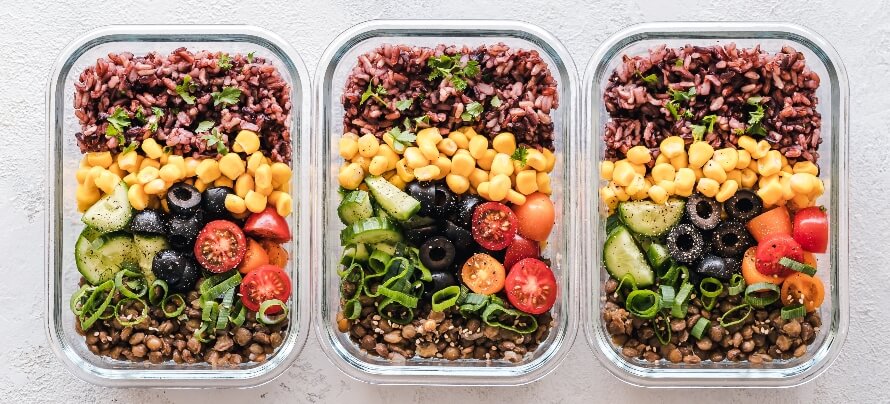
Grocery stores are struggling to meet the demands of panic shoppers and keep their shelves stocked, but you know what many aren’t running out of?
Fresh fruits and vegetables, of course.
Sure, these foods don’t keep as well and aren’t as attractive for stockpiling, but when people are scared, they don’t turn to broccoli, oranges, and bananas for solace. That’s what frozen pizza, ice cream, and mac ‘n cheese are for.
Try not to be one of these people.
Not only is eating recklessly going to result in unwanted weight gain, it’s also going to make it harder to shift back to healthier eating when the crisis is over.
So, instead of using our current predicament as an excuse to become a human garbage disposal, why not flip the script and get better at preparing delicious and nutritious home-cooked meals instead?
Here are a few tips that will help.
Learn to Cook Delicious and Nutritious Meals
With restaurants closed or only accepting take-out and disposable income dwindling, cooking is a prized skill right now.
What’s more, it’s also a skill that will pay dividends for the rest of your life.
It saves money, improves dietary compliance, and promotes healthy eating habits. There’s also something to be said for not having to rely on other people and businesses to provide one of our most basic needs: sustenance.
Cooking tasty food isn’t hard, either.
For starters, you can pick up any popular cookbook, choose a simple recipe, follow the instructions, and enjoy the result.
What’s trickier, however, is making mouth-watering dishes that aren’t loaded with calories.
Anything tastes good with enough butter, sugar, and salt, but it takes some creativity and skill to make delicious meals from fruits, vegetables, whole grains, meat, seafood, dairy, and so forth with minimal added fat or sugar.
Luckily, there are cookbooks for just that as well. Here are some of my favorites for beginners:
- The Shredded Chef by Mike Matthews
- The Skinnytaste Cookbook by Gina Homolka
- Skinnytaste One and Done by Gina Homolka
- Racing Weight Cookbook by Matt Fitzgerald
And if you’re already a halfway decent cook and would like to take your skills to the next level, here are a few books to buy next:
- Cookwise by Shirley Corriher (Not all of these recipes are “macro-friendly,” but the author gives you an excellent overview of cooking fundamentals and science, and you can easily reduce the calorie and fat content of almost all of the recipes.)
- The New Artisan Bread in 5 Minutes Per Day by Jeff Hertzberg and Zoë François (Particularly helpful right now with many stores running out of packaged bread.)
- Betty Crocker Cookbook by Betty Crocker (A cookbook classic everyone should own.)
- On Food and Cooking: The Science and Lore of the Kitchen by Harold McGee (The most advanced and comprehensive cookbook on this list, but also one of the most detailed and illuminating. Read this after you’ve read the others.)
If you’re looking for an even larger variety of recipes, along with more detailed instructions, graphics, and so forth, you can also sign up for an online meal planning service.
These services charge a monthly fee, and in return you get a complete weekly menu along with recipes and grocery lists. Some of them also provide nutrition facts for all of the meals and the ability to sort by dietary preferences like vegetarian, low-carb, etc.
Here are a few of the most popular options:
Online cooking classes abound as well. Here are a few good ones:
And finally, if you want some fast, easy, and healthy recipes you can start making right away, check out Legion’s recipe posts! Here are some of our most popular ones:
Breakfast Recipes
⇒ 10 Superfood Smoothies that Are Healthy and Easy to Make
⇒ 20 Overnight Oats Recipes to Brighten Up Your Mornings
⇒ 20 Surprisingly Healthy Waffle Recipes
⇒ 20 Omelet Recipes to Kickstart Your Day
⇒ 10 Surprisingly Healthy Grits Recipes That You’ll Love
Lunch Recipes
⇒ 10 Ground Bison Recipes That Beat Chicken Any Day
⇒ 10 Chicken Pasta Recipes You Can Make in 30 Minutes or Less
⇒ 10 Surprisingly Easy (and Healthy!) Japanese Curry Recipes
⇒ 10 Killer Smoked Sausage Recipes That Are Actually Healthy
⇒ 20 Ground Turkey Recipes You’ve Never Tried Before
Dinner Recipes
⇒ 20 Healthy Chicken Recipes That You’ll Be Excited to Eat
⇒ 10 Canned Salmon Recipes You’ll Want to Eat Every Week
⇒ 20 Healthy Cajun Recipes That Bring New Orleans to You
⇒ 20 Awesome Meatball Recipes From Around the World
⇒ 20 Easy Casserole Recipes You’ll Never Get Sick Of
Create and Follow a Meal Plan
If you’ve never followed a meal plan before, now is the ideal time to start.
A meal plan is like a personal schedule for your diet. It tells you exactly what to eat and when to achieve your body composition and health goals.
Everyone should be well acquainted with meal planning, because it more or less guarantees results, and is a lot more enjoyable and time efficient than tracking your meals on the fly using a calorie-counting app like MyFitnessPal.
Meal planning is also particularly helpful for people who use food to deal with boredom and stress.
Furthermore, people who’ve successfully used meal plans to lose fat and gain muscle are almost always the most successful “intuitive eaters” as well.
Through meal planning, they’ve developed an accurate sense of how much food they should be eating, and thus are less likely to accidentally overeat when they’re eating according to their body’s natural signals of hunger and fullness.
If you want to learn how to create an effective meal plan, read these articles and follow the instructions:
⇒ The Definitive Guide to Effective Meal Planning
⇒ 7 Tips for Making Perfect Meal Plans for Weight Loss
⇒ How to Make Meal Plans That Work For Any Diet
And if you don’t feel like creating a meal plan on your own, our pre-made meal plans for fat loss and muscle gain can help, or even better, our custom meal plan service, where we build a meal plan precisely tailored to your goals and preferences.
Use Online Tools to Buy Healthy Food
If you’re self-quarantining, sick, or just don’t feel like going to the grocery store to buy food, you can pay a small fee to have the food brought to you!
Here are several online food-ordering services that make healthy eating much more convenient.
- ButcherBox
- Public Goods
- U.S Wellness Meats
- Amazon Prime Fresh Delivery (May or may not be available in your area currently)
- Instacart (Ditto)
- Purple Carrot
- Blue Apron
Summary: Being stuck at home blows, but why not spice it up by learning to cook healthy meals, experimenting with new healthy recipes, and creating and following a meal plan?
Stay Productive and Busy
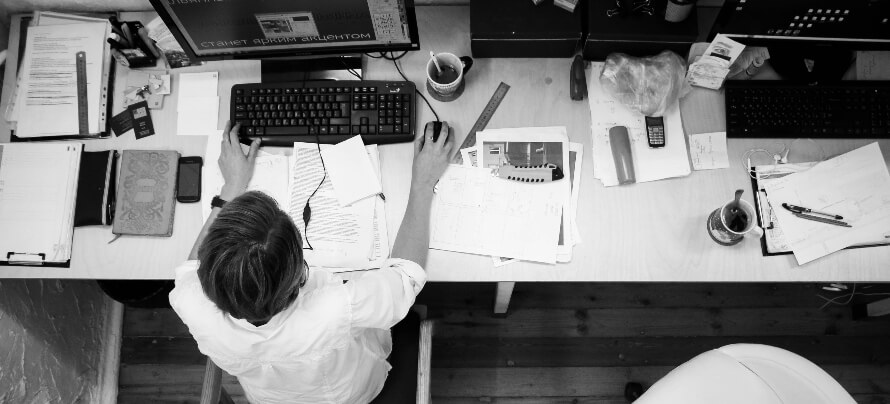
Ignore this advice at your peril.
If you don’t spend most of your time purposefully (productively), you’re going to emerge from isolation in a worse place mentally and emotionally. Think lethargy, depression, despair, and the like.
On the other hand, one of the best ways to bolster morale in a time like this is to occupy—nay, preoccupy—yourself with meaningful activities. This includes your work, of course, but also anything else that aligns with your goals.
If you can do this, you’ll . . .
1. Be less tempted to fall into bad habits.
Idle hands do the devil’s work and all that.
At the very least, focusing on your goals will keep you from filling your days with Netflix, video games, or eating. In fact, one of the best diet “hacks” out there is simply staying busy. You might be surprised how little you think about food when your attention is on other things.
2. You’ll feel better about yourself.
Remember the Dark Playground?
Staying busy is the best way to tune out its siren song and quell feelings of guilt, doubt, and anxiety. Just focus on what’s in front of you that you can control, do your best, and things will likely work out fine in the end.
3. You’ll be in a better position financially.
Some say the economy will likely soar upward this summer like a phoenix rising from the ashes. Others say it’ll probably limp along like a wounded animal for a year or more. And still others say we’re already approaching the point of no return and a global depression is on the horizon.
No matter who’s right, if you work hard now, you’ll be better prepared for whatever comes next, good, bad, or middling.
And so, how specifically should you stay busy and productive?
Work as Much as You Can
Now that you don’t have to commute, attend meetings, or hell, get dressed, you probably have an extra couple of hours on your hands every day.
If possible, pour it into your work.
Look at it this way:
If you work for someone else, this is a great opportunity to not only demonstrate dedication and set yourself up for a post-coronavirus reward, but also to help your company survive this economic shakeup.
Remember—millions of people have already lost their jobs, so if you still have one, you should be thankful and willing to show it.
And if you work for yourself, I’ll bet many of your competitors are scrambling right now, so this may be a chance to outpace them and gobble up market share.
To help you get the most out of your work, review the steps at the beginning of this article on how to set up an effective daily routine, and then, once that’s done, it’ll help to set up a productive work station.
Brush up on basic ergonomics and try to make sure your workstation checks all of the major boxes. It’s hard to get much work done when you’re uncomfortable.
The biggies you want to get right are:
- The top of your computer screen should be just above eye-level.
- Your computer screen should be about an arm’s length away from your face.
- Your hands should be at or slightly below your elbows when typing.
- Your back should be slightly reclined or more or less vertical.
- Your knees should be about the same height as your hips.
Consider getting a standing desk so you can alternate between standing and sitting.
Although standing desks don’t help you burn many calories, as many people think, they do allow you to take a break from sitting all day, which can improve your comfort and thus productivity.
Finally, try to ensure your workplace is as quiet as possible.
As Cal Newport explains in Deep Work, a wealth of data shows that even seemingly innocuous distractions—a conversation in the next room, a text message buzzing on your phone, an email notification—can significantly derail your focus and disrupt your productivity.
Read Great Books
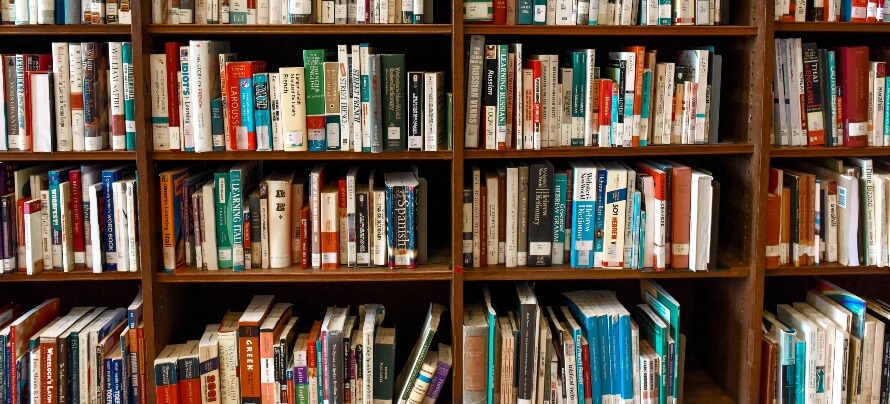
I encourage people to read as much as possible, because knowledge benefits you much like compound interest. The more you learn, the more you know; the more you know, the more you can do; the more you can do, the more opportunities you have to succeed.
On the flip side, I also believe there’s little hope for people who aren’t perpetual learners. Life is overwhelmingly complex and chaotic, and it slowly drowns and devours the lazy and ignorant.
So, if you haven’t seen the bottom of your TBR pile since birth, maybe you can make a dent in it by the time the quarantine is lifted, and if you haven’t finished a book in about as long, maybe you can glimpse what you’ve been missing.
As for specific book recommendations, here are several that are particularly relevant right now:
- Meditations by Marcus Aurelius (Book Review)
- Thinking In Systems by Donella H. Meadows (Book Review)
- Principles by Ray Dalio (Book Review)
- The Lessons of History by Will Durant (Book Review)
- The War of Art by Steven Pressfield (Book Review)
- The Magic of Thinking Big by David Schwartz (Book Review)
- Resilience by Eric Greiteins
- The Obstacle Is the Way by Ryan Holiday
- Message to Garcia by Elbert Hubbard
Here are some books that are great for enhancing your health, happiness, and hardiness:
- Deep Work by Cal Newport (Book Review)
- Thinking, Fast and Slow by Daniel Kahneman (Book Review)
- The 7 Habits of Highly Effective People by Stephen R. Covey (Book Review)
- The One Thing by Gary Keller and Jay Papasan (Book Review)
- The Millionaire Next Door by Thomas J. Stanley (Book Review)
- Mastery by Robert Greene (Book Review)
- Good to Great by Jim C. Collins (Book Review)
- Flow by Mihaly Csikszentmihalyi (Book Review)
- Peak Performance by Brad Stulberg and Steve Magness (Book Review)
- Getting Things Done by David Allen (Book Review)
- Bigger Leaner Stronger by Mike Matthews (natch)
- Thinner Leaner Stronger by Mike Matthews
- The Little Black Book of Workout Motivation by Mike Matthews
Here are some of my favorite biographies that remind us that we humans can overcome much worse than COVID-19:
- Julius Caesar by Philip Freeman (Book Review)
- Alexander the Great by Philip Freeman (Book Review)
- Benjamin Franklin: An American Life by Walter Isaacson (Book Review)
- Elon Musk by Ashlee Vance (Book Review)
- Band of Brothers by Stephen E. Ambrose (Book Review)
- Titan by Ron Chernow (Book Review)
- Grant by Ron Chernow
- Tesla by W. Bernard Carlson
- Rogue Warrior by Richard Marcinko
- Shadow Divers by Robert Kurson
And although I haven’t read much fiction in the last several years, here are a few standouts:
- American Psycho by Bret Easton Ellis
- Fahrenheit 451 by Ray Bradbury
- The Lord of the Rings by J. R. R. Tolkien
- The Bourne Identity by Robert Ludlum
- World War Z by Max Brooks
- Ender’s Game by Orson Scott Card
Read Great Articles
If I had a nickel for all the times I’ve come across an interesting, well-written article, saved it to Instapaper, and never saw it again, I’d be making money in a very odd way.
If you can sympathize, let’s make some headway together, shall we?
And if your article aggregator is lonely, here’s some a-plus fodder to fill it with:
- The Checklist by Atul Gawande
- Edward Snowden by James Bamford
- The Secret History of Tiger Woods by Wright Thompson
- Secrets of the Little Blue Box by Ron Rosenbaum
- Snow Fall by John Branch
- Why Procrastinators Procrastinate by Tim Urban
- Chaos at the Top of the World by Joshua Hammer
- That Time George Lucas Asked a Guy From Pittsburgh to Join Him and Rule the Galaxy by Anthony Breznican
- The Perfect Irony that “The Wolf of Wallstreet” Film Was Also a Real-Life Scam by Zaron Burnett
- What Really Happened to Malaysia’s Missing Airplane by William Langewiesche
- The Man Who Captures Criminals for the D.E.A. by Playing Them by Yudhijit Bhattacharjee
Listen to Great Podcasts
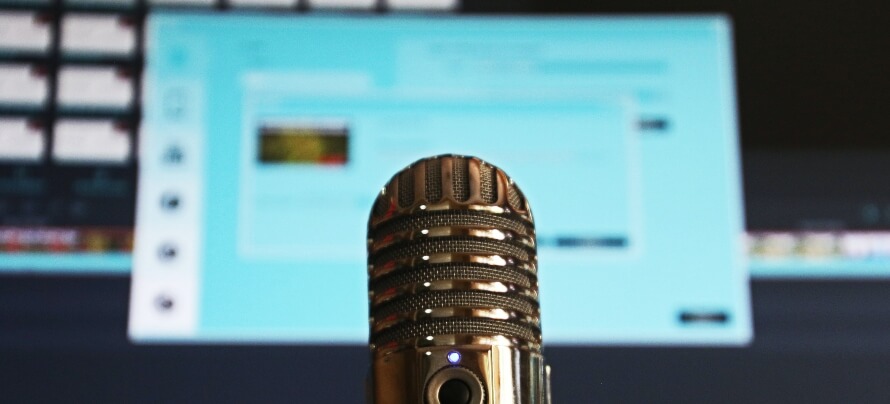
I usually don’t make the time to listen to podcasts (I prefer reading), but if you choose wisely, they can be one of the easiest ways to learn interesting and useful information, find compelling stories, and better understand how the world works.
Here are some that I’ve liked:
- Muscle for Life by Mike Matthews
- Mind Pump
- Revisionist History by Malcom Gladwell
- StartUp (Go back and listen from the beginning)
- History of Rome by Mike Duncan
- Hardcore History by Dan Carlin
- Lore by Aaron Mahnke
- Serial by WBEZ
- The TED Interview Podcast by TED Talks
Watch Great Movies
You’ve worked and worked out, noshed and nourished, and read and reviewed, and now it’s time to rest and relax.
And if you’re going to park yourself in front of the T.V., you might as well watch something great than waste time on much of the pap most streaming services serve up nowadays.
Here are some “Mike-approved” movies and documentaries:
- The Defiant Ones
- Man on Wire
- The War by Ken Burns
- The Godfather Trilogy
- Spartacus (the 1960 version)
- Gone with the Wind
- Black Hawk Down
- Band of Brothers
- Lawrence of Arabia
- The Shawshank Redemption
- The Lord of the Rings Trilogy (Part l, Part ll, Part lll)
- Taxi Driver
- Dr. Strangelove (a fun end-of-the-world satire)
- Braveheart
- Raiders of the Lost Ark
- The Incredibles
- Memento
- Live Die Repeat: Edge of Tomorrow
- Stargate
- Downfall
- Idiocracy
- Goldeneye
- The Girl With the Dragon Tattoo
- Office Space
- Headhunters
- Pirates of the Caribbean
And TV shows (throwbacks, really, but bear with me):
- Lost (season one, at least)
- True Detective (ditto)
- Sherlock
- Archer
- The Americans (only on first season, but enjoying it)
- Breaking Bad
- Dexter (first two seasons)
- Chernobyl
- The Expanse
- Battlestar Galactica
- Turn
The Bottom Line on Staying Fit, Productive, and Sane During the COVID-19 Outbreak
This nasty new coronavirus will have most of us bunkered down in our homes for at least a few more weeks, so we might as well make moves to make the most of the situation.
Some are whiling away their days panic-posting on social media, surfing the streaming services, and sucking down a steady stream of cheap calories, but why not do the opposite?
Why not use this pandemic to double down on improving your productivity, health, and knowledge?
It doesn’t have to be hard, either. In fact, in some ways, it’s easier than it has been in a long time (what else is there to do?).
At bottom, you want to establish a daily routine that manages your time effectively, and then, you stick to it every day.
This daily routine should include some sort of exercise to help maintain your muscle, strength, or general fitness. This will also help you stay in the habit of working out until you can get back in the gym.
You should also allot some time in your schedule to preparing healthy meals at home using whole, minimally processed, fresh foods. If you don’t know how to cook, cookbooks, online recipes and courses, and meal planning services are aplenty.
You should also consider making and following a meal plan, which makes managing your body composition much easier, especially when you aren’t very active.
One of the most important ways to use your time right now is productivity—activity with a purpose, like work or anything else that brings you closer to a goal you care about. This more than anything else will keep your spirits up and help you thrive after this is all over.
Finally, use your leisure time wisely. Read great books and articles, listen to great podcasts, watch great movies and TV shows. Think education, cultivation, and fascination, not vegetation.
Do all of that, and in a couple of months, you’ll be able to pat yourself on the back for making capital out of this crisis.
What do you think of these strategies for being productive while self-quarantined? Anything else you’d like to share? Let me know in the comments section below!
Scientific References +
- Repke MA, Berry MS, Conway LG, Metcalf A, Hensen RM, Phelan C. How does nature exposure make people healthier?: Evidence for the role of impulsivity and expanded space perception. PLoS One. 2018;13(8). doi:10.1371/journal.pone.0202246
- Otto MW, Church TS, Craft LL, Greer TL, Smits JAJ, Trivedi MH. Exercise for mood and anxiety disorders. Prim Care Companion J Clin Psychiatry. 2007;9(4):287-294. doi:10.4088/PCC.v09n0406
- Lally P, van Jaarsveld CHM, Potts HWW, Wardle J. How are habits formed: Modelling habit formation in the real world. Eur J Soc Psychol. 2010;40(6):998-1009. doi:10.1002/ejsp.674










